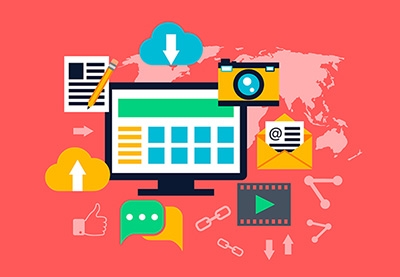Content Marketing and Its Critical Role in Event Marketing

By Elizabeth Johnson
If your event has a blog, you’re engaged in content marketing. A social media channel? Yes, content marketing again. An e-newsletter? You guessed it – content marketing. Whether show planners call it “content marketing” or not, many are using content marketing tactics to promote their events.
Content marketing can build brand awareness, maintain connections and engagements with audiences between events and provide support to help attendees “make the case” to their supervisors for participating in an event.
Over time, well-executed content marketing can push prospective attendees or exhibitors through the decision-making process to becoming buyers. Here are some ideas for making your content marketing efforts an official marketing strategy:
Step 1: write a content marketing strategy complete with measurable goals.
Year after year, research performed by the Content Marketing Institute is finding B2B marketers with written content strategies have better campaign outcomes.
“Thinking about the pre, live and post lifespan of your event to build out shareable content or a relevant story for the event can help outline a content strategy,” said Sarah Sebastian, creative director and owner of Rose Gold Collective.
She added, “Think of your event as a product and it becomes evident to create a content experience strategy.”
Step 2: conduct as much marketing preparation as possible before your event.
“Build lists of relevant hashtags and social media usernames beforehand so you’re not scrambling in the moment to find the right information to include and find out what influencers will be at the event, and look for ways to engage them,” explained Derek DeVries, digital strategist for Lambert, Edwards & Associates, which executes content marketing for a variety of events including the North American International Auto Show (NAIAS).
He continued, “Also, schedule content before the event to free yourself to focus on real-time updates during the event. Think about the attendee experience: what information would they find helpful and how can you deliver it?”
Prior to NAIAS, DeVries’ team prepares social media posts with details including a map of the show floor or the schedule of press events, posts that perform well because they’re valuable to attendees in the moment.
Indeed, pre-event content is a critical component of event content marketing. For content marketing to work, show organizers must be promotional while providing value at the same time.
“Create pre-event video teasers that can be pushed out that include brand content in an engaging way to get your guests hyped up (and) unveil special speakers slowly through the series,” Sebastian suggested.
While marketing Content Marketing World, Content Marketing Institute creates useful and relevant content for its audience based on event sessions, tracks, topics, categories and speakers so its calls to action can be event-related, according to Cathy McPhillips, CMI vice president of marketing.
Step 3: create compelling post-show content.
“After the show, we repurpose articles, images, video and so much more to promote our event the following year,” McPhillips explained.
She added,” It’s cyclical, but we always make sure to maintain that high level of epic content to continue to nurture our relationship with our customers.”
In addition, people watching an event typically look for recaps, so figuring out ways to help create that content can provide great marketing opportunities, DeVries added.
Still, content marketing is not all “organic” or “free.” Paid content can be a crucial element in most campaigns, including social media advertising.
“Organic reach tends to be really low and it’s difficult to capture the attention of any audience in such a short window of time, so you need to put ad dollars behind your posts,” DeVries stressed.
He continued, “The good news is that [social media] advertising is inexpensive and you’ll get a huge organic bump for any ad dollars you put behind your content.”
Last step: don’t be afraid to be an early adopter.
Make sure to keep up on the latest social media features and determine if any of them make sense for your event.
“In January 2016, Facebook Live was still in beta and we got early access for the auto show,” DeVries explained.
He continued, “The live streams we did performed extremely well. This year, Facebook’s big push was for 360-degree content, so we bought an inexpensive consumer-grade 360-degree camera and let our followers immerse themselves in the event. For example, we took 360 photos inside concept cars that even the press didn’t have access to. However, if you’re going to use new features, make sure you practice with them first.”
Unlike many marketing tactics that work on an event’s registration cycle, content marketing is a year-round effort. To get the most out of a content strategy, show organizers must put resources into supporting these efforts on an ongoing basis.


Add new comment